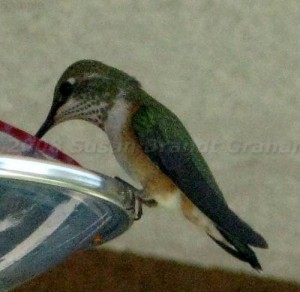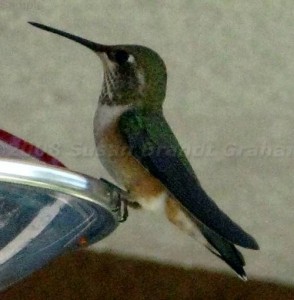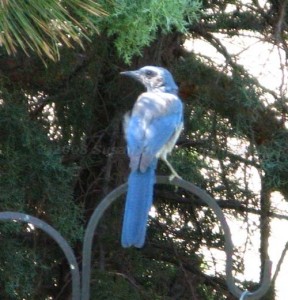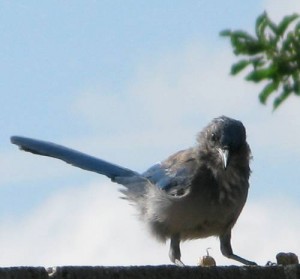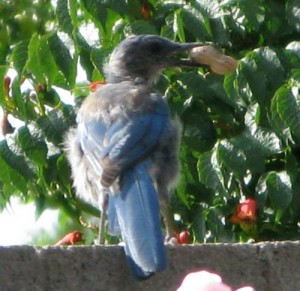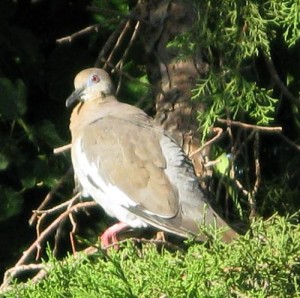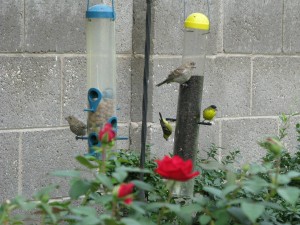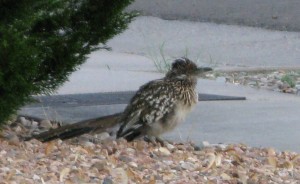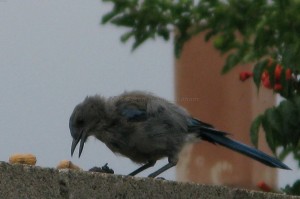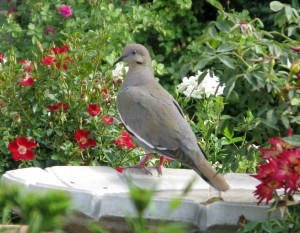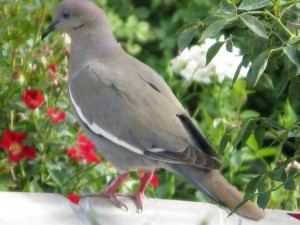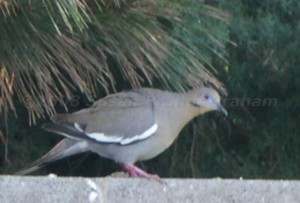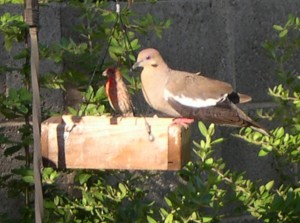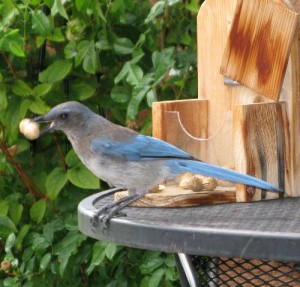
Have you discovered the Smithsonian’s Migratory Bird Center yet? If not, do yourself a favor and check it out.
I kind of stumbled upon it a couple of weeks ago, and cannot believe that little gem was sitting there and I did not know about it. Virtually all of us in the Southwest are in some sort of migratory bird flyway, and have a chance to observe many migratory birds. Here is a whole site devoted to them!
After a couple of days I got up enough nerve to upload a couple of pictures, but I did not expect anything to come of it. I actually got a “thank you” from Gregory Gough, the internet person there, who set up a little gallery for my pictures. Who would have thought. . .?
I love the jays that visit my yard, and expect to be fed peanuts all the time. Last night I uploaded this photo of a jay, and called it a “Western Scrub Jay,” which is what I always thought it was. But as soon as I had uploaded it, I looked at the other Western Scrub Jays posted there. “Uh, oh,” I thought, “this must be the Mexican or Gray-breasted Jay.” How embarrassing! So I sent a correction to my contact there, Gregory.
This morning he sent an email saying this guy really was a Western Scrub Jay, and told me all the details that made it so. He explained about the three different species of scrub jays, and that the desert Western scrub jays were just not as bright as the coastal Western scrub jays, which most of the other ones on the Smithsonian site are. By that time I was not really sure what this bird was, other than a jay. Now that is really embarrassing!
This afternoon I had time to check out bird call at the Cornell site. There is no question, based on CALL, this bird is a Western Scrub Jay, just a New Mexico version!
Thanks for your patience, Gregory.
If you haven’t checked out the Smithsonian site, do yourself a favor and spend some time there. And, if you have questions, contact the people there. You will have a hard time finding any nicer or more helpful people on the internet. Check out the Smithsonian’s widget on our sidebar, too.
Happy birding!
Like this:
Like Loading...

